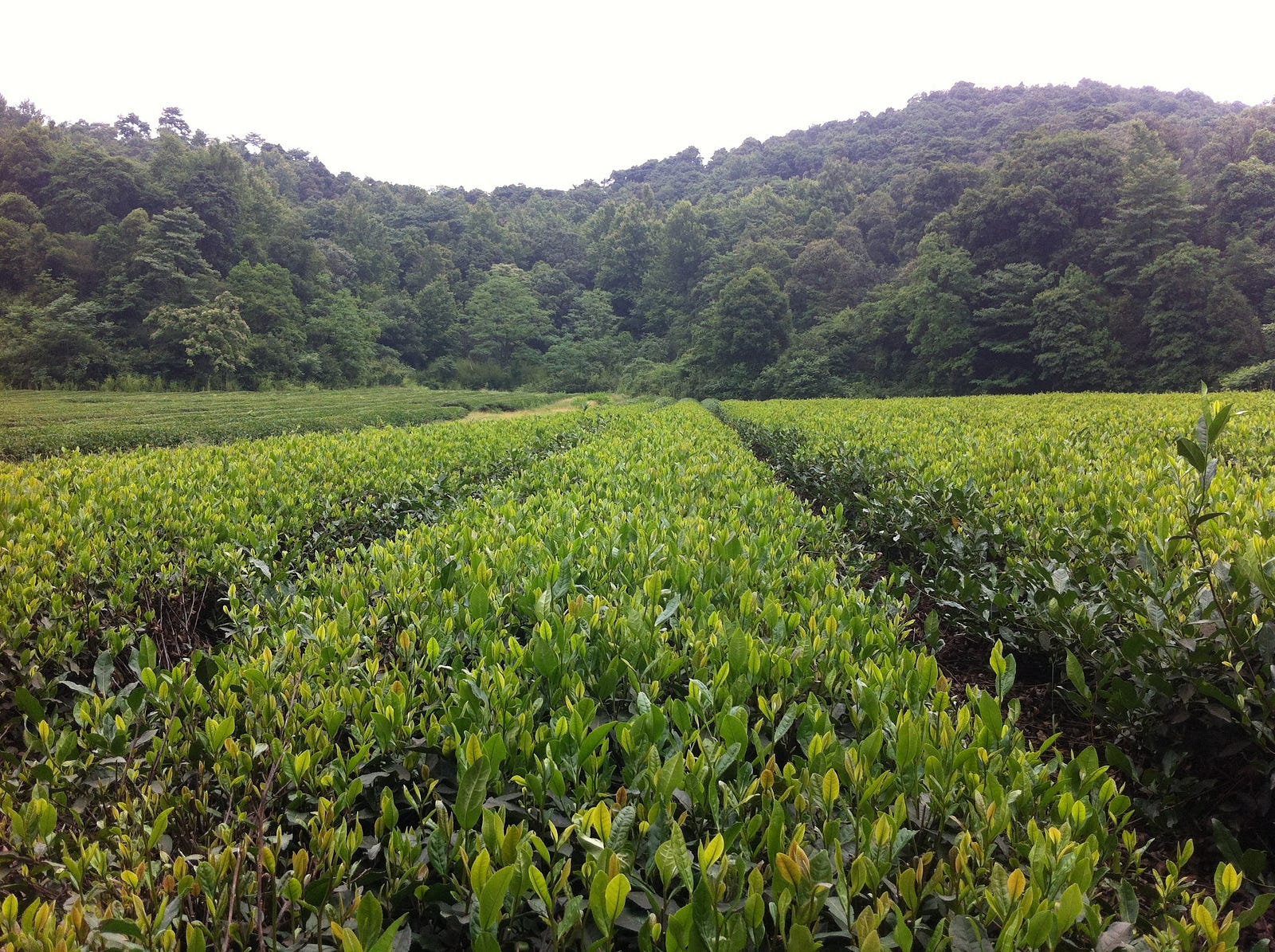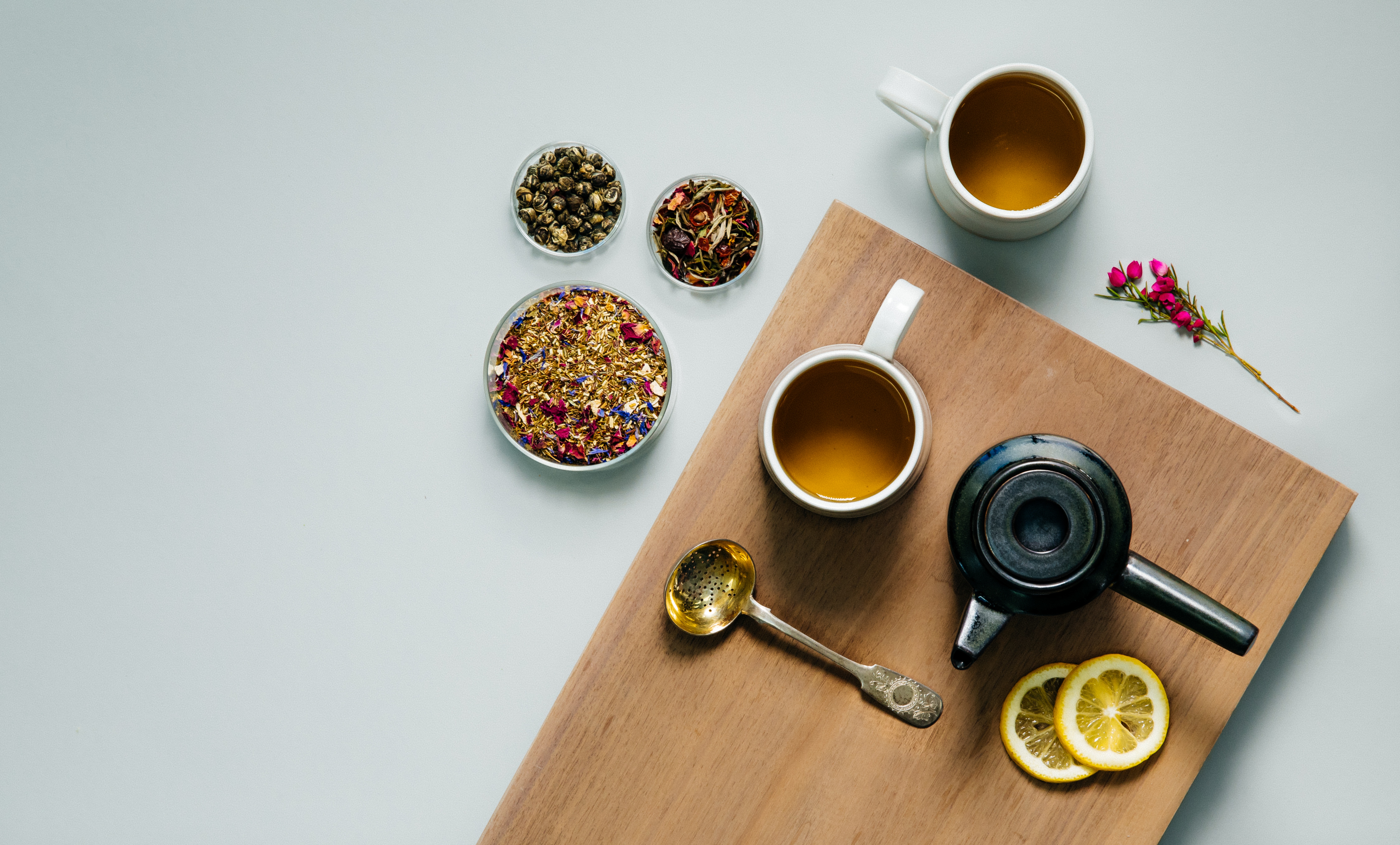Tea has been consumed for over 5,000 years. History credits legendary Emperor Shen Nung (2696 BC) of China for finding and reporting the power of tea to awaken the mind, body and spirit. This leader of an ancient clan, would venture out into the wild, cataloging all the wonderful herbs he came across. Shen Nung is said to be the father of Chinese medicine and agriculture. Because of this, China is considered by many to be the home and birthplace of tea. Today, we classify five countries as the traditional countries of tea’s origin: China, Taiwan (Formosa), Japan, India, and Sri Lanka(Ceylon).

Taiwan, formerly known as the island of Formosa, started cultivating tea bushes about 200 years ago. Chinese tea makers emigrated to Taiwan from the Fujian Province of China and found the soil, climate, and landscape perfect for growing tea. The tea bushes tend to flush five times a year from about April to December. Taiwan is known mostly for its exquisite oolong teas like: Bao Zhong (Jade Pouchong), Ali Shan, Jade Oolong, Amber Oolong, Tung Ting, Dong Fang Mei Ren (Oriental Beauty), and Milk Oolong.
Japanese Buddhist monks in the 9th century were the first to drink tea, having learned about it during envoys to China. In 1191 Zen Priest Elsai brought seeds back to Kyoto which became the basis for Uji tea. Soon after, tea cultivation spread throughout Japan’s prefectures. In the early days, tea was produced by hand, over the centuries Japanese engineers were able to create incredible machines to mimic that hand movement. Today, only special and expensive teas are produced by hand. Japan is most known for its umami rich green teas, such as: Gyokuro, Matcha, Kukicha, Karigane, Sencha, Bancha, Houjicha, and Gen Mai Cha. Japanese teas are steamed, not pan fired like Chinese teas; thus these teas are more emerald in color and offer a more brothy seashore cup.
In the late eighteenth century, a larger leaf varietal of Camellia sinensis was found in northern India. It took botanists over 50 years before this new tea plant, Camellia sinensis assamica, was successfully cultivated. Today, India is one of the world’s largest producers of tea, with billions of pounds harvested each year. There are over 10,000 estates producing tea in India, with about 80% of the tea produced using the CTC method. There are 4 basic regions where tea is produced: Assam, Darjeeling, Sikkim and Nilgiri. India is most known for its amazing black teas; however, each region produces a totally different cup character. Assam teas are known for their maltiness and are used in most breakfast tea blends. Darjeeling, nestled among the foothills of the Himalayas, typically has only 4 flushes (First, Second, Monsoon, Autumnal) each having its own cup character. Darjeeling teas are known for their leaf appearances of both green and brown. Sikkim only has one estate, Temi, established in 1969. These teas are similar to those of Darjeeling but are fruitier and tend to have more body. Lastly, Nilgiri, far to the south, in the Blue Mountains, produces a more balanced cup of black tea perfect for making iced tea. India is where the spiced drink, Chai, which many Americans have come to love, was first produced. However, Chai is simply Hindi for tea. In India the tea is correctly called Masala Chai. In the US when we ask for Chai Tea, we are literally asking for Tea Tea.
Sri Lanka (Ceylon) was a coffee producing country until the 1860s, when a coffee rust fungus wiped out most of the crops, forcing growers to find new products to cultivate. The first English tea factories were established in the early 1870s due to the success of a Scotsman, James Taylor, who in the late 1860s successfully produced black tea following the traditions of India. Today, huge tea plantations are spread among seven growing regions: Ruhuna, Kandy, Sabaragamuwa, Dimbula, Uva, Uda, Pussellawa and Nuwara Eliya. Because of the islands location, Sri Lanka can produce tea year-round with new flushes coming about every 80 days. Sri Lanka is best known for its wonderful black teas, of all grades, using both orthodox and CTC processing methods.
China is home to all six of the major tea types produced: White, Green, Yellow, Oolong, Black and Dark (often referred to as Pu-erh). Tea is produced in eighteen different regions throughout China, each producing various tea types with varying cup characteristics. Tea in China is referred to as Cha. There are many famous teas produced in China. Below is a list of the ones that are more popular in the United States. The teas are listed first with their more common American name and then followed by their more traditional Chinese name in parenthesis.
White Tea: Silver Needle (Bai Hao Yin Zhen), White Peony (Bai Mu Dan)
Green Tea: Green Snail Spring (Pi Lo Chun), Yellow Mountain Hair Peak (Huangshan Maofeng), Dragonwell (Lung Ching), Misty Mountain (Mao Jian), Gunpowder (Zhucha), Precious Eyebrows (Chun Mei), Lucky Dragon (Young Hyson), Spring Green (Guo Lu), Jasmine Scented
Yellow Tea: Jun Mountain Silver Needle (Jun Shan Yin Zhen), Yellow Buds (Meng Ding Huang Ya)
Oolong Tea: Phoenix Oolong, Big Red Robe (Da Hong Pao), Pure Fragrance Oolong (Qing Xiang Dan Cong), Chinese Cinnamon (Ro Gui), Iron Goddess of Mercy (Ti Kuan Yin), Ginseng Oolong, Osmanthus Oolong
Black Tea: Golden Monkey (Tan Yang Gong Fu), Keemun (Qimen), Yunnan (Dianhong), Lapsang Souchong (Zengshan Xiaozhong), Bohea Lapsang (Wuyi Lapsang), Orchid Black (Lanxiang), Rose Black (Meigui Hongcha), Lychee Black
Dark Tea
Type of Aging: Traditionally Aged or Raw (Qing Cha or Sheng Cha), Cooked or Artificially Aged or Ripe (Shou Cha or Wo Dui Cha), Rough Tea Before Aging (Mao Cha)
Shape: Loose, Cake (Beeng Cha), Birds Nest (Tuo Cha), Brick (Zhuan Cha), Square (Fang Cha), Mushroom (Jin Cha), Melon (Jin Gua), Dragon Pearl (Long Zhu)
Region: Pu-erh from Yunnan or Dark Tea from Hunan and Guangdong
Misc: Various display teas, also referred to as flowering teas, made from all different tea types.
• • •
Art of Tea is an award winning purveyor of specialty and organic teas, based in Los Angeles, CA.
If you found this article helpful, please share it with coworkers, colleagues, and fellow lovers of tea.

